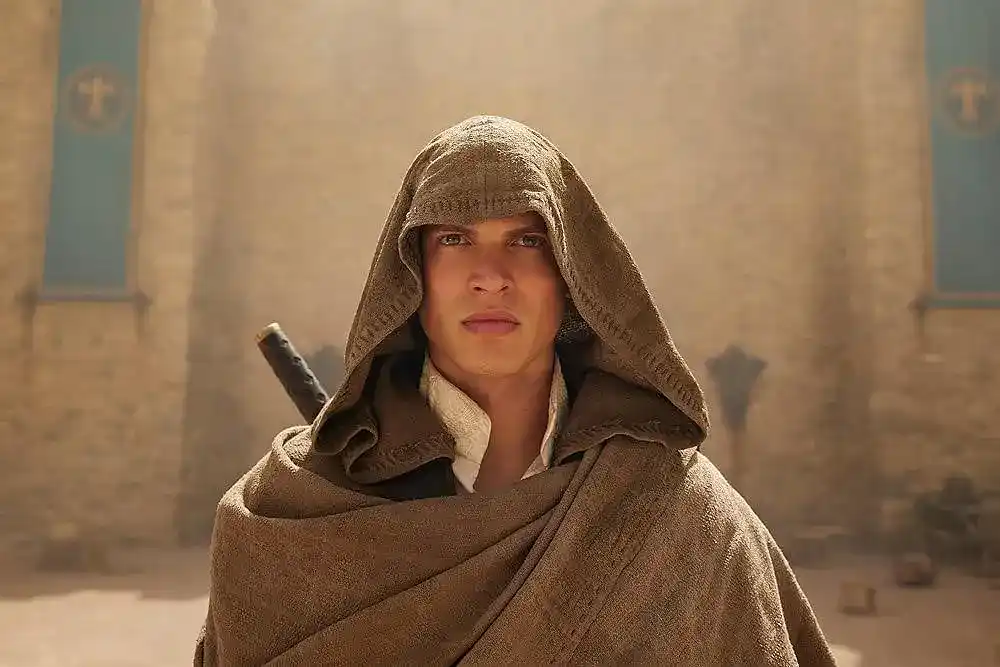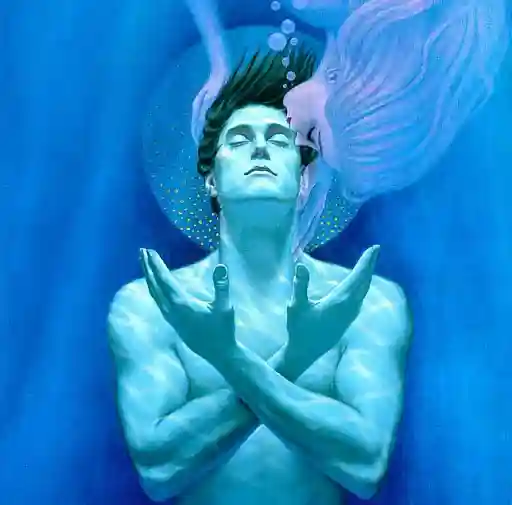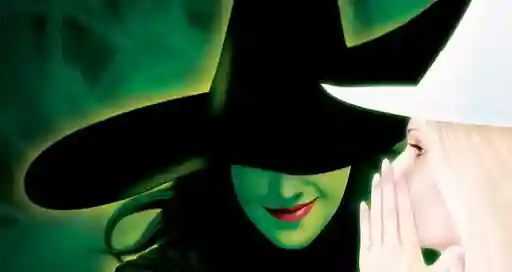Fantasy is a genre that breaks down into many subgenres, but its two main subcategories are high fantasy and low fantasy. High fantasy typically takes place in a completely separate world, often featuring a detailed magic system and fantastical creatures. Low fantasy, meanwhile, generally takes place in our own world, with a select few fantastical elements intruding upon the ordinary.
Here’s a quick breakdown of some more key differences between the two, along with some examples:
| High Fantasy | Low Fantasy | |
|
Setting |
Completely fictional setting, often with an elaborate new history or culture(s) |
Takes place in our world, or in a world that’s very similar to ours |
|
Magic |
Has elaborate magic systems and various kinds of fantastical creatures |
Magical elements are fairly subtle, “invading” the ordinary world |
|
Scope |
Typically more “epic” with huge casts of characters and “save the world”-type plots |
Focuses more on individual characters and the struggles they face |
|
Examples |
The Lord of the Rings; The Wheel of Time; The Priory of the Orange Tree |
Ninth House; Vicious; The Dresden Files |
All that said, telling the two apart isn’t always an exact science. But since when has the scientific method applied to magic? In this post, we’ll further explore the characteristics above, as well as other differences between high and low fantasies — along with examples from popular fantasy stories.
Worldbuilding approaches
When weighing up the differences between high and low fantasy, there’s no better place to begin than… the place! Let’s look at how these fantasy subcategories differ in their worldbuilding.
High fantasy involves a lot of worldbuilding
High fantasy is the home of the extraordinary. Backwards-flowing waterfalls, luminous forests, floating mountains — if there’s something otherworldly about a setting, odds are it’s a high fantasy.
In these worlds, you’ll typically find:
- 🗺️ Brand-new cultural systems: When most people hear the term “worldbuilding”, these are the kinds of settings that spring to mind. We’re talking fully fleshed-out worlds with their own in-depth geography, culture, and political systems. Lord of the Rings is the go-to example here, which established the template that countless fantasy authors have followed since.
- 🧝 Archetypical fantasy races: Elves, dwarves, fairies, goblins, orcs — high fantasy is inhabited by all kinds of non-human beings. Conversely, low fantasy mostly keeps to supernatural humans like psychics, witches, or shapeshifters.
- 🧿 Rich lore: High fantasy worlds are often built on deep history. Crumbling empires, ancient languages and age-old prophecies create layers of backstory that can span thousands of years. Authors like George R.R. Martin craft intricate mythologies where past events directly influence present conflicts, like how Robert's Rebellion echoes throughout A Song of Ice and Fire.
Low fantasy worldbuilding is (appropriately) “low-key”
Low fantasy stories craft settings that feel familiar with just a hint of the fantastical — creating a whole different kind of daydream for the wistful reader. Perhaps they’ll transfer from HR to the otherworldly compliance office, or maybe they’ll drop out of their theoretical physics degree and take up transfiguration studies instead.
Here are a few low fantasy worldbuilding tropes to watch for:
- 👁️ Hidden worlds: This is the quintessential "magic hiding in plain sight" setting, largely thanks to the biggest low fantasy phenomenon of the past 30 years: Harry Potter. Picture Diagon Alley, nestled between the cobbles of an innocuous London road, or Platform 9¾ lurking behind an unassuming stone pillar at King's Cross. The magical world exists parallel to, but separate from, “our” world — most ordinary people have no idea it's there.
- 🏙️ Contemporary urban environments: Then there’s the “modern city — but with magic!” trope, in which mundane reality and magic awkwardly coexist. Think of Jim Butcher's The Dresden Files, which follows a supernatural investigator in current-day Chicago. Harry Dresden operates in both worlds simultaneously: he might deal with vampires and faeries, but he also has to reckon with rush-hour traffic and bad cell service.
- 🏰 Historical backdrops: Cityscapes not your speed? Don’t stress — plenty of low fantasy takes the opposite approach, weaving a few fantastical elements into an otherwise realistic historical environment. Take Jonathan Strange & Mr Norrell by Susanna Clarke. The story is set in Napoleonic England, long after most magicians have faded from history. Only two remain — and they must navigate the rigid social conventions of Regency England.
Since we’re discussing the supernatural, let’s cast our minds (and wands!) to another key differentiator between high and low fantasy: the magic system.
Magic system structures
For a story to be considered a fantasy, it needs to contain some kind of supernatural or magical element. The degree of influence that these phenomena have will often indicate whether a story is high or low fantasy.
🌫️High fantasy magic in Mistborn
Magic is a fundamental force in high fantasy worlds; it's as integral to everyday life as electricity or economics. We can see this idea in action in Brandon Sanderson's Mistborn series.
On the planet Scadrial, Allomancy shapes the social order from top to bottom. By ingesting and burning different kinds of metal, Allomancers can create distinct magical effects. While these powers are rare among the general population, noble houses employ Allomancers for everything from construction to warfare. This creates a sharp divide between the magical nobility and non-magical majority — with entire wars fought over magical resources.
High fantasy magic systems often follow detailed, codified rules that govern how power works. Sanderson had this to say on the subject:
"When I write my books, I'm known for very logical rule-based magic systems. I write with one foot in fantasy and one foot in science fiction."
This systematic approach is all over Mistborn — every magical ability has clear costs, limitations, and logical consequences. It reinforces the narrative’s colossal scope by making magic feel like a science that can reshape civilizations.
💂Low fantasy magic in Rivers of London
Magic systems in low fantasy are much less integral to the social structures of their world. In stories that take the “hidden world” approach like Ben Aaronovitch’s Rivers of London, magic is (you guessed it) kept secret from the general population.
In this particular series, magic is physically exhausting to use, and even the most basic spells have a steep learning curve. Supernatural entities do exist, but they live alongside regular Londoners; a goddess might run a nightclub, but to regular patrons, she's just an eccentric businesswoman. This way, magic exists and affects society, but the wider world continues to function “as usual.”
Of course, there are no hard-and-fast rules here. Something like The Chronicles of Narnia is undoubtedly high fantasy, with its Golden Age prophecy and the importance of magic. However, its hidden world approach reminds us more of contemporary low fantasy.
Speaking of prophecies, let’s take a closer look at those foretold harbingers of fate: the protagonists.
Protagonist archetypes
The type of protagonist is another good indicator for whether a story leans more towards high or low fantasy. If the main character is someone with inherent magical abilities or a legendary bloodline, you’re probably looking at high fantasy.
High fantasy MCs often (but not always) wield great power
Think of The Wheel of Time, where Rand al'Thor is literally called "The Dragon Reborn". He possesses immense “power channeling” abilities that mark him as fundamentally different from ordinary people.

He Who Comes With the Dawn… (Image: Amazon)
That said, not all high fantasies are quite so on the nose in this respect. Let’s return to Lord of the Rings for a moment. While Frodo is “chosen” to destroy the Ring, it’s more of a burden that falls to him through circumstance — rather than explicit destiny. Gandalf needed a hobbit for the task, and not many shirefolk are open to adventuring.
Low fantasy MCs are usually “everymen” (or women)
The Lord of the Rings approach is much more common in low fantasy. There, protagonists are often Average Joes who just so happen to find themselves in extraordinary circumstances. Heroes typically learn about the supernatural world at the same pace as the reader, making mistakes and figuring things out as they go along.
Bob Howard from The Laundry Files by Charles Stross is one such everyman — a government IT worker who gets dragged into dealing with supernatural threats. There's no Aslan or Gandalf for Bob to lean on; he's essentially winging it. And Bob definitely remains “human” throughout his adventures, relying on quick wit and savvy bureaucratic navigation rather than mystical powers.
Low fantasy protagonists like Bob Howard remain relatable precisely because they don't transcend their humanity. On the contrary, they just get better at working with the tools they do have — in many cases, turning their “averageness” into a power of its own.
Typical stakes and scope
In any case, how your hero arrives at the plot — whether they’re chosen by destiny or simply stumble into it — may also be an early indicator of how big their problems are going to get! Let’s look at this high vs low fantasy differentiator next…
High fantasy is often “epic”
In high fantasy, the scope of conflict can get big. We’re talking fate-of-the-universe kind of big, where the preordained protagonist must vanquish a great evil. Take Terry Goodkind's Sword of Truth series, where Richard Cypher discovers he's the prophesied Seeker. As part of this prophecy, he must attempt to defeat Darken Rahl — an ancient power threatening to plunge all worlds into eternal darkness.
Low fantasy is more “grounded”
Meanwhile, low fantasy normally remains a little more down-to-earth. In Yuki Urushibara's hit manga Mushishi, we follow a man named Ginko and his strange encounters in rural communities. Instead of a grandiose, overarching narrative, Urushibara uses this setup to explore quiet, intimate conflicts where the stakes are personal rather than world-threatening.
The differing scope here gives each subgenre fundamentally different victory conditions. High fantasy heroes will work to accomplish a grand goal, while their low fantasy counterparts succeed by solving the comparatively mundane problem at hand.
But there are notable exceptions
Of course, that isn’t to say that low fantasy stories can’t have world-ending stakes. Voldemort certainly has apocalyptic ambitions in Harry Potter, for example. Catastrophe isn’t a high fantasy essential, either — Terry Pratchett’s elaborate Discworld series is full of low-scale conflicts about municipal politics and postal reform.
We should also note here that a smaller scope doesn’t necessarily mean lower tension. While a protagonist fighting to keep their job might technically have less to lose than a hero whose success determines the fate of the universe, the relatability of personal stakes can create equally gripping drama.
🐉 Want to write mind-blowing fantasy of your own? Get started with this free course over on Reedsy Learning.
Trends in writing style
Finally, know that this fantasy divide goes beyond tropes and scopes — it’s embedded into the writing itself! High and low fantasy each follow their own stylistic trends that set them apart from one another. Let’s explore each one with an example below.
👑 High fantasy prose in Game of Thrones
High fantasy ascends to the realms of elevated discourse, wherein authors craft prose with deliberate grandeur befitting the mythic tapestries they weave. In other words, they use fancy, formal language to match the “epicness” of their stories.
High fantasy authors often favor third-person omniscient or multiple limited perspectives — with either option allowing for sweeping descriptions and epic declarations. That formality extends to dialogue as well. High fantasy characters often speak with a certain weight that reflects the scope of their world.
Witness how such gravitas manifests itself in George R.R. Martin's A Game of Thrones:
“What is honor compared to a woman's love? What is duty against the feel of a newborn son in your arms . . . or the memory of a brother's smile? Wind and words. Wind and words. We are only human, and the gods have fashioned us for love. That is our great glory, and our great tragedy.”
And extravagant language isn’t the only high fantasy hallmark in A Song of Ice and Fire. Throughout the books, we jump from the dry wit of Tyrion Lannister, to Jon Snow’s brooding introspection, all the way over to Arya Stark’s relentless pursuit of justice (just to name a few). By taking advantage of multiple POVs, Martin is able to showcase the vast scope of his epic narrative.
🧙Low fantasy prose in The Magicians
Here’s the lowdown. On this side of the fantasy fence, they prefer to keep things casual, ya dig?
Low fantasy deliberately discards elevated prose, instead embracing the wonder of contemporary speech. Authors craft their narratives with accessibility in mind, using language that feels recognizable and relatable, rather than mythic or distant.
This naturally helps anchor readers in “the familiar,” which makes them sympathize more with the protagonist. Writers can build on this intimacy further with a first person POV.
This works especially well in “hidden world” style narratives where the protagonist is discovering the supernatural world for the first time alongside the reader. Here’s an (in)appropriate example from Lev Grossman’s The Magicians:
“Are you kidding? That guy was a mystery wrapped in an enigma and crudely stapled to a ticking f*cking time bomb. He was either going to hit somebody or start a blog.”
Notice how this character, Quentin, speaks like an actual college student — casual swearing and all. His grounded voice helps sell the compelling idea that the supernatural could be just out of sight in our own world.
As we’ve alluded to throughout this post, there is no hard line between high and low fantasy. There are high fantasy stories that keep their magic systems basic, and low fantasy heroes that carry the weight of the world on their shoulders. Both have their place on your bookshelf, so the real question isn't "Is this high or low fantasy?" but rather "What kind of magic am I in the mood for today?"
About the author

Nick Bailey writes about anything and everything in the realm of writing and publishing. From articles on honing your craft to launching your book, Nick aims to provide valuable insights and practical tips to the Litreactor community in his posts. Aside from books, Nick enjoys hiking, electronic music, and filling up his personal cookbook with new recipes.






